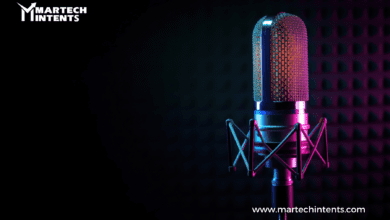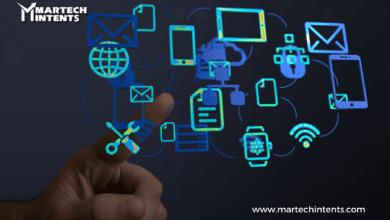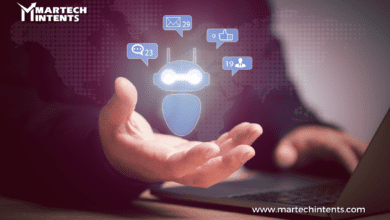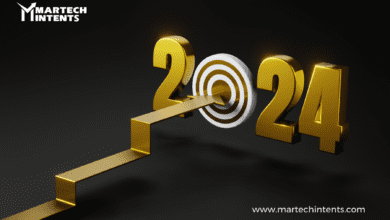The Hottest Martech Trends For 2023

Introduction:
The martech landscape is constantly evolving, and staying up-to-date with the latest trends is crucial for businesses to stay competitive.
In this blog post, Discover the latest Martech trends shaping 2023. Stay ahead with cutting-edge strategies and technologies for marketing success.
Virtual Reality and Augmented Reality:
Virtual reality (VR) and augmented reality (AR) have been on the radar for a while, but in 2023, they are expected to take marketing and advertising to new heights.
AR allows businesses to provide customers with engaging experiences and interactively showcase products.
On the other hand, VR opens up possibilities for immersive brand experiences, offering virtual tours of businesses to potential customers.
Example: A furniture store can use AR to allow customers to visualize how different pieces of furniture will look in their homes before making a purchase.
Data Analytics and Big Data:
Big data and analytics have become a cornerstone of martech, enabling businesses to gain valuable insights from vast amounts of data.
With analytics, companies can make informed decisions, target their marketing efforts more effectively, and develop new products and services based on customer needs and preferences.
Example: An e-commerce company can use analytics to identify trends in customer behavior and adjust its marketing strategies accordingly, leading to increased sales and customer satisfaction.
Chatbots:
As digital communication becomes more prevalent, chatbots have emerged as a popular way for businesses to interact with customers.
These computer programs mimic human speech and can handle simple customer inquiries and tasks, freeing up human employees to focus on more complex issues.
Example: A travel agency can use a chatbot to assist customers in finding and booking suitable travel packages, providing instant support 24/7.
Cloud Computing:
Cloud computing continues to revolutionize businesses by providing cost-effective and flexible IT solutions. With cloud computing, companies can access their data from anywhere, save on IT infrastructure costs, and ensure data security.
Example: A small startup can use cloud-based software to store and manage customer data securely without the need for expensive servers and infrastructure.
Cybersecurity:
With the increasing dependence on technology, cybersecurity has become a top priority for businesses.
From cloud-based security solutions to AI-powered cybersecurity tools, companies are constantly innovating to protect their data and systems from cyber threats.
Example: A financial institution can invest in AI-powered cybersecurity tools to detect and prevent fraudulent activities, ensuring the safety of customer accounts and transactions.
Internet of Things (IoT):
IoT is making its presence felt in the martech landscape, offering real-time insights into customer behavior and preferences.
Connected cars, smart homes, and wearable devices are just a few examples of how IoT is transforming marketing and advertising.
Example: An electronics retailer can use IoT data from smart home devices to understand customer preferences and offer personalized product recommendations.
Mobile Marketing:
With the increasing use of mobile devices, mobile marketing is becoming essential for businesses to reach their target audience effectively.
SMS campaigns, push notifications, and location-based targeting are some of the strategies companies can use to engage mobile users.
Example: A restaurant can send out SMS campaigns with special offers to customers in the vicinity, enticing them to visit and dine in.
Personalization:
Personalization is all about tailoring marketing messages to specific customers based on their preferences and behavior.
By utilizing customer data and demographics, companies can create personalized marketing campaigns that resonate with their audience.
Example: An e-commerce retailer can send personalized product recommendations to customers based on their browsing history and purchase behavior, increasing the chances of conversion.
Programmatic Advertising:
Programmatic advertising automates the buying and selling of ad space, allowing businesses to target their ads more effectively and efficiently.
This form of advertising enables companies to adjust their campaigns in real-time to respond to changing consumer trends.
Example: An online retailer can use programmatic advertising to target ads to customers who have recently shown interest in similar products, increasing the chances of conversion.
Voice Search:
With the rise of smart speakers and voice-enabled devices, voice search is gaining momentum.
Optimizing websites for voice search and using natural language keywords will be essential for businesses to stay relevant in this trend.
Example: A local business can optimize its website for voice search to ensure it appears in voice search results when customers ask for nearby businesses.
Conclusion:
The martech landscape is evolving rapidly, and businesses must stay ahead of the curve to remain competitive.
From virtual reality and big data analytics to chatbots and voice search, the hottest martech trends for 2023 are set to reshape the way businesses engage with their customers and drive growth in the digital era.
Embracing these trends and integrating them into marketing strategies will be crucial for businesses to succeed in the dynamic world of martech.




